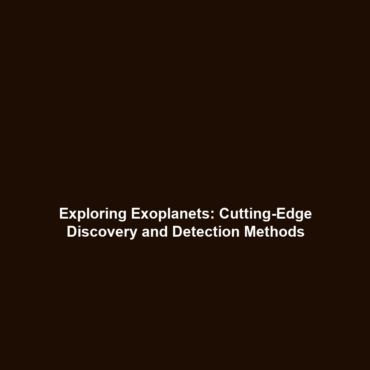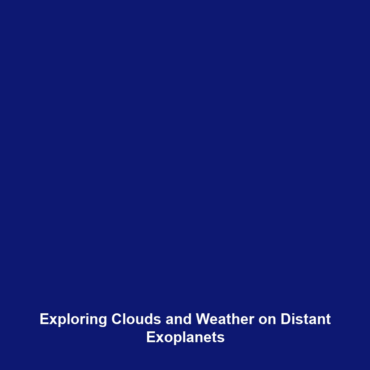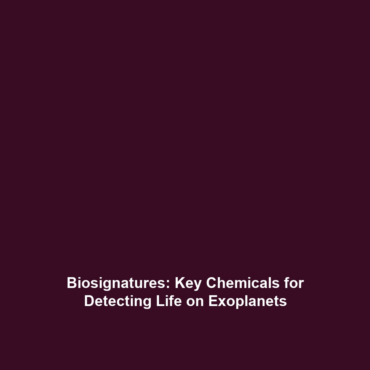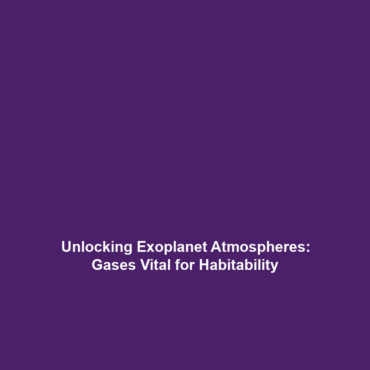Exoplanets in Popular Sci-Fi: A Journey Through Cinema and Literature
Introduction
Exoplanets, or planets outside our solar system, have captured the imagination of writers and filmmakers for decades, shaping our understanding of the universe and our place within it. The portrayal of exoplanets in popular sci-fi serves as a significant cultural touchstone, blending scientific aspirations with artistic expression. Iconic worlds like Pandora in Avatar and Arrakis in Dune exemplify how these fictional representations can influence both public perception and scientific inquiry. This article explores the treatment of exoplanets in various media, highlighting their impact and significance in the broader realm of exoplanet science.
Key Concepts
The landscape of exoplanets in popular sci-fi is rich with themes that intersect seamlessly with scientific knowledge. Here are some key concepts:
The Representation of Alien Ecosystems
Many sci-fi narratives depict exoplanets with intricate ecosystems that reflect Earth’s diversity. For instance, Pandora’s bioluminescent flora and fauna provide a vivid imagination of extraterrestrial life forms.
Cultural Implications
Exoplanets often represent humanity’s hopes, fears, and the quest for identity beyond Earth. The barren deserts of Arrakis draw parallels to real-world issues like resource scarcity and environmental challenges.
Scientific Foundations
Writers frequently base their fictional worlds on emerging scientific theories and discoveries. This connection fosters public interest in astrobiology and the ongoing search for habitable worlds.
Applications and Real-World Uses
Exploring the portrayal of exoplanets in popular sci-fi can yield practical insights and applications in exoplanet science:
- Public Engagement: Movies and books serve as catalysts for public interest in space exploration, inspiring future scientists and astronomers.
- Educational Tools: Sci-fi narratives can be utilized in education to explain complex scientific principles in an engaging manner.
- Inspiration for Research: Concepts introduced in popular media often lead to scientific inquiries and innovative technologies aimed at exploring exoplanets.
Current Challenges
Despite the excitement surrounding exoplanets in popular sci-fi, there are also significant challenges and limitations within the realm of exoplanet research:
- Feasibility of Exploration: Many theorized exoplanets are located light-years away, making them challenging to study with current technology.
- Misleading Representations: Unrealistic depictions of exoplanets can lead to misconceptions about their environments and potential for life.
- Limited Funding: While public interest is high, funding for exoplanet research often struggles to keep pace with the demand for exploration and discovery.
Future Research and Innovations
The future of exoplanets in popular sci-fi and scientific exploration is bright, fueled by ongoing research and technological advancements:
Innovations like the James Webb Space Telescope are set to revolutionize our understanding of distant worlds, enabling detailed studies of exoplanet atmospheres. As speculative fiction continues to inspire new generations, we can expect to see a growing intersection between sci-fi narratives and scientific breakthroughs, paving the way for revolutionary advancements in our quest to understand the universe.
Conclusion
In conclusion, the portrayal of exoplanets in popular sci-fi enriches both our cultural landscape and scientific discourse. Iconic worlds such as Pandora and Arrakis not only entertain but also encourage interest in the scientific exploration of our cosmos. As we continue to navigate the complex interplay between imagination and reality, we invite readers to explore other related topics on exoplanets and their real-world implications.
For more information on exoplanets and their portrayal in literature and film, check out our articles on exoplanet science and the influence of sci-fi on science.






